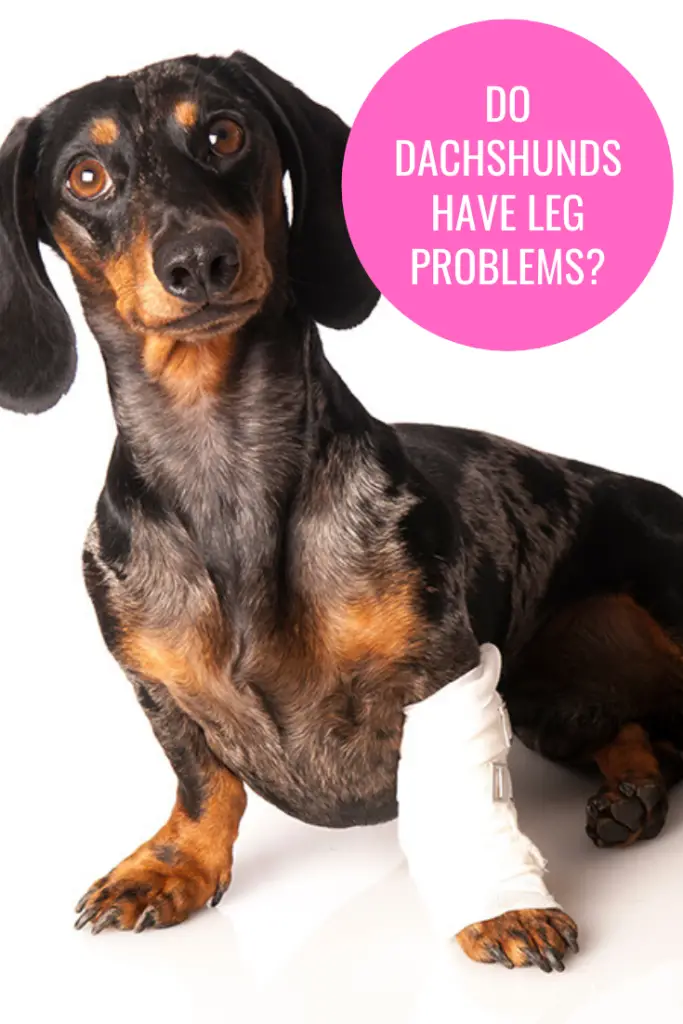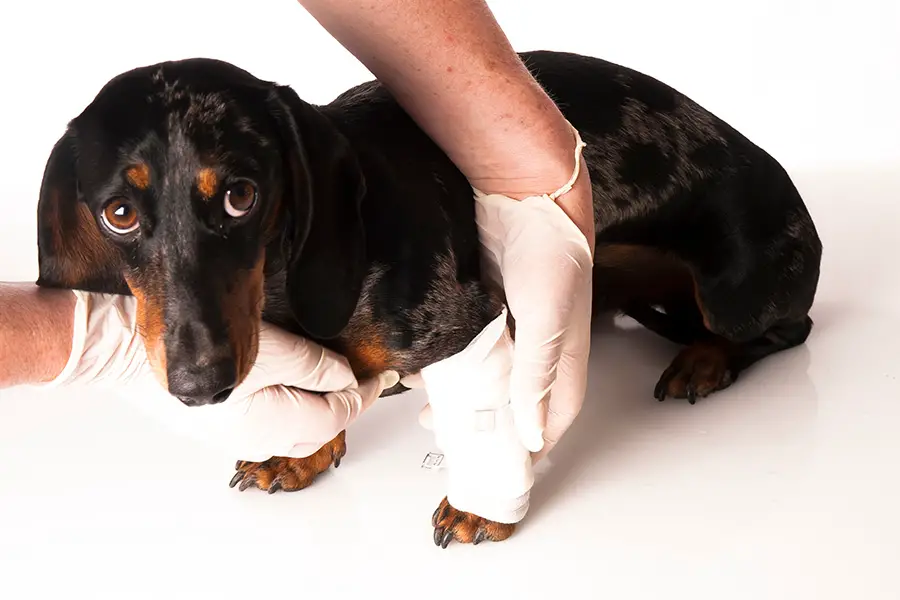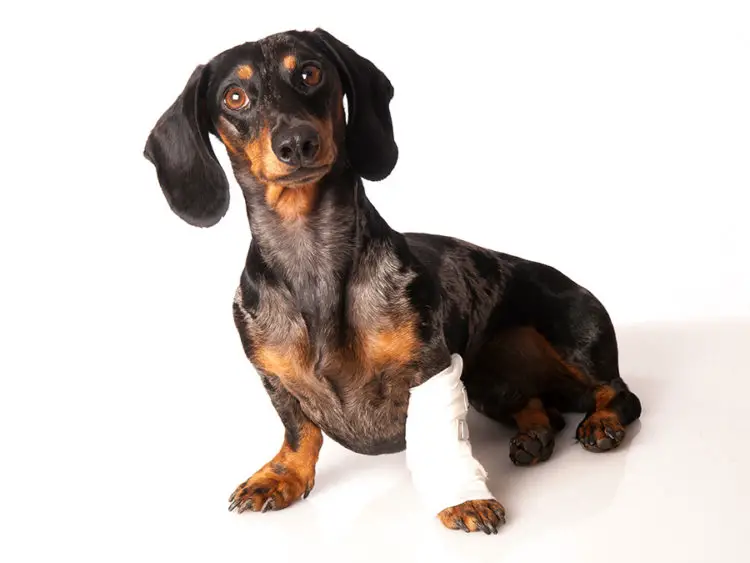Most dogs like to run and play outdoors. Unfortunately, knee problems often slow them down. The most common knee problem in dogs is a luxating patella. Dachshunds love to make holes and hunt badgers. They are lovely, funny pets, but they can be somewhat stubborn, so you need to use a lot of willpower and patience with these little dogs. Since their body is long, special care must be taken to prevent mishandling. Make sure your dog is also not overweight as this can cause problems.
A luxating patella occurs when the structures that make up a dog’s knee are misaligned. When a dachshund suffers from this condition, a small bone protrudes from the dog’s knee.

Luxate Patella - Is A Serious Problem
Some breeds are more severely affected by this knee problem than others. This condition can cause discomfort and pain. Dachshunds with this condition on either side of their hind legs can also change their posture and how they walk. Varieties commonly affected by this knee problem are miniatures and small varieties like dachshunds and basset hounds.
Symptoms of Leg Problem - Dachshunds Luxate Patella
Symptoms of this condition include lameness and pain in that location. Some pets will limp, and their hind legs will be stiff. It is important to take your pet to a veterinarian for diagnosis, which is made through a series of x-rays. If your pet is diagnosed with luxating patella, treatment depends on the condition’s rating. Depending on the type or severity, the patella dislocation of the dog is given a grade of 1-4, based on the Orthopedic Animal Foundation (OFA) grading system. Higher grades are more serious. In Grade 1, you can manually dislocate the patella when the legs are fully straightened. When the leg returns to its normal position, the patella also moves. This grade does not have rigidity or is very small. In Grade 2, and as in Grade 1, the patella can spontaneous dislocate manually or when the joint is bent. The patella remains dislocated until the animal extends the joint in the opposite direction or it is manually pushed into place. In Grade 3, the patella remains mostly dislocated, but can be repositioned manually. In the final grade, Grade 4, there is permanent dislocation of the patella and it cannot be pushed back into place. At this stage, some muscles may also begin to be displaced.
Grades 2-4 should require surgery if your pet has difficulty walking (depending on the grade level and the exact details of the surgery). Surgery usually deepens the groove in which the patella sits. This procedure is called osteotomy. The goal of osteotomy is to reduce the risk of transferring the patella. In some operations, additional bone must be removed. When the bone is removed, the patella is safely seated, forming deep grooves that cannot be dislocated again. Each veterinarian’s office may differ in the actual price of this procedure, so it is advisable to consult a veterinarian regarding a pricing and payment plan.
Therapy Preferences
Your dog’s diagnosis is determined at the time of physical examination and when the dog has symptoms such as limping, skipping or moving his legs. To specify the severity of the condition, x-rays of the thigh bones and knees are performed. This kind of treatment is not necessary for Grade 1, but you should monitor your dog if the problem gets worse. For Grades 2, 3, and 4, surgery can be performed to restore the deformity.
Orthopedic surgeons perform this type of surgery, which includes correcting the dog’s bone alignment, tightening joint capsules, and deepening knee-knee grooves. The cost of this kind of surgery is about $1,500 to $3,000, depending on the severity of the case.
This is not a serious emergency. But if the dog suffers from slipping knees, it is best to consult a vet as soon as possible. If your dog needs surgery, the vet will refer you to an orthopedic specialist. If the dog’s grade is 2-4, surgery is immediately recommended to prevent the condition from worsening. Increased damage to bones and joints can make the surgical outcome less successful.
How to Care for Dachshunds After Surgery?

After your dog’s surgery, the veterinarian is likely to recommend dog inflammation and anti-inflammatory medications for about a week. Also, your dog should rest a lot during this time. That is, activity is minimized for at least one and a half weeks. Outside the house, pets should be kept on a leash. Put your dachshund in a small, comfortable space so you can avoid other types of activities that can put pressure on your dog’s knees.
Finally, physiotherapy begins about seven days after surgery. Walk the dog slowly for about five minutes. Another suggestion is to take him swimming. When it’s right, your dog should be able to walk longer on the leash six weeks after the operation, and after about fifteen weeks, the knee should be fully restored and used regularly.
What Are Your Responsibilities?
If your dachshund is limping often and the condition does not resolve on its own within a few days, take your dog to a veterinarian. Careful observation, good nutrition, and proper exercise can be very beneficial for dogs diagnosed with a luxating patella. If your dachshund is diagnosed with this condition, he can possibly avoid surgery with supplements and rehabilitation.
Conclusion
If your dog is limping, delaying treatment can put him at risk. Take him to the vet to get him checked out. Finding out if your dog has a problem is one of your jobs as his owner. Follow your vet’s advice on treatment of your dachshund’s knee problem. In some cases, surgery may be an option.

